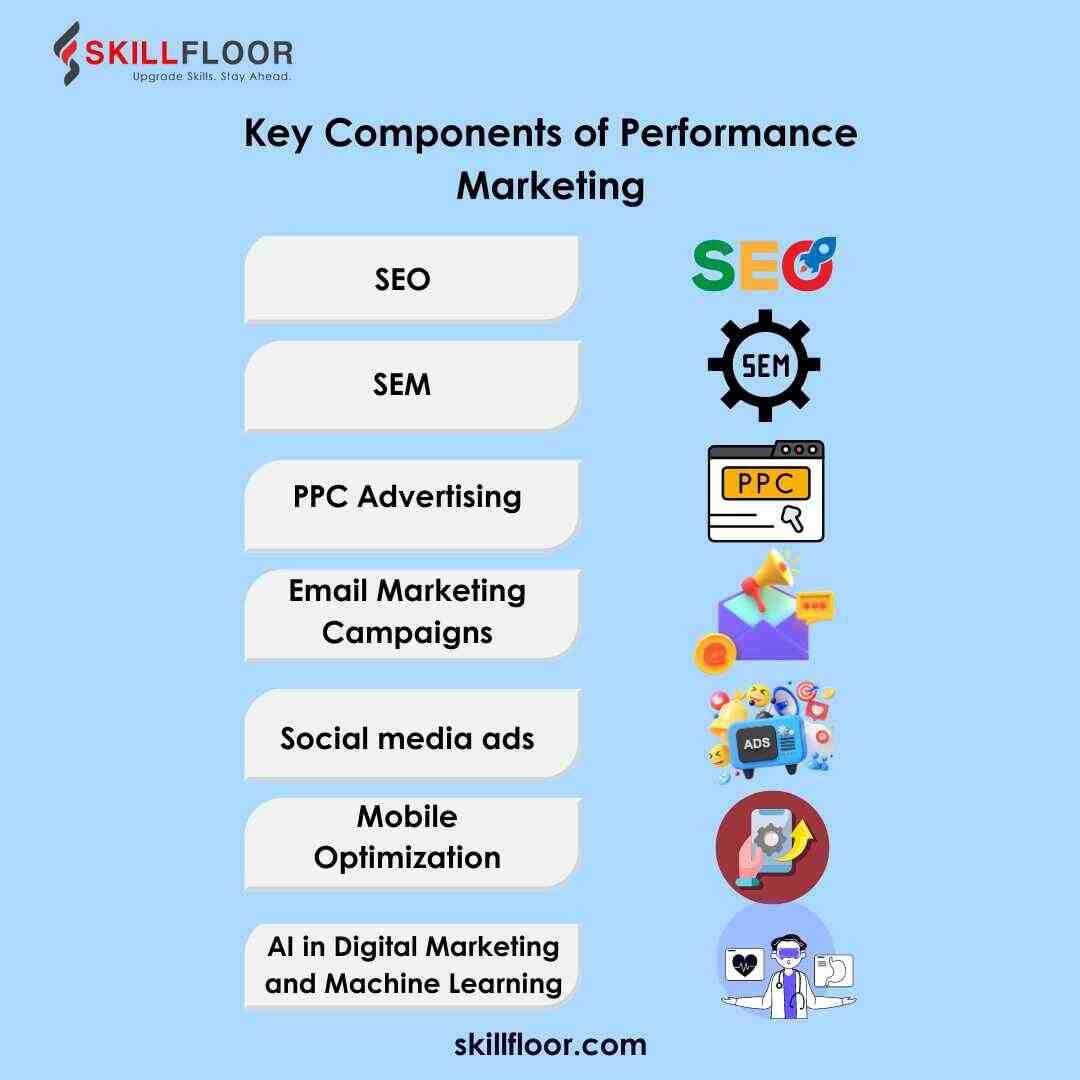How to get started with performance marketing?
Learn how to kickstart your journey in performance marketing with essential tips and strategies. Boost your ROI and drive business growth effectively.

While starting a performance marketing campaign may feel like an important step, its journey is exciting! A key element of digital marketing that focuses on measurable results is performance marketing. Whether you're experimenting with PPC, social media marketing, or creating other performance marketing strategies, your goal is always to see visible outcomes from your work. Then, what is performance marketing exactly? Using this technique, advertisers pay for particular actions such as clicks or conversions making every dollar they invest valuable. We'll go over what's needed in this blog post, "How to Get Started with Performance Marketing," to help you get started with performance marketing. Gaining knowledge of the basics and making use of resources like PPC and social media marketing will allow you to create performance marketing strategies that perform and generate measurable results. Are you ready to dive into it? Let's get started with performance marketing together!
What is Performance Marketing?
Advertisers who use performance marketing, which is a results-driven digital marketing strategy, only pay when a particular action like a click, sale, or lead is completed. Performance marketing is all about measurable outcomes, compared to traditional marketing, where you could spend a significant portion of your budget in the hopes of gaining recognition for your brand. Because you only pay for the results that are important to your company, it's an effective approach to allocate your budget.
Key Components of Performance Marketing
Performance marketing is a broad field with many important elements. Let's analyze these:

Search Engine Optimization (SEO): The process of improving your website to appear higher in search engine results pages (SERPs) is known as search engine optimization or SEO. To increase exposure and generate organic traffic, it entails conducting keyword research, producing content, and performing technological optimizations.
Search Engine Marketing (SEM): SEM is the practice of appearing in search engine results using paid advertising. Pay-per-click (PPC) advertisements are one example of this, where you bid on terms related to your company.
Pay-per-click (PPC) Advertising: Advertising that charges you a fee each time a user clicks on your advertisement is known as pay-per-click or PPC. One of the most well-known PPC networks is Google Ads, which lets you target particular audiences and keywords.
Email Marketing Campaigns: Email marketing involves sending possible clients and customers targeted emails. It's an excellent way to maintain audience engagement and nurture leads.
Social media ads: You may target individuals based on their demographics, interests, and behaviours by using the advertising possibilities available on platforms such as Facebook, Instagram, and LinkedIn.
Mobile Optimization: It's important to optimize your campaigns for mobile, as more people are accessing the internet through mobile devices. This covers ads and websites optimized for mobile devices.
AI in Digital Marketing and Machine Learning: By enabling more accurate targeting and customized experiences, these technologies have transformed performance marketing. AI can assist with data analysis, outcome prediction, and campaign automation for improved performance.
Setting Up Your Performance Marketing Strategy
You need an effective strategy before you can begin using performance marketing. Here's a detailed how-to:
Define Your Goals: What do you hope to accomplish? Is it more internet traffic, leads, or sales? Your entire plan will be guided by well-defined goals.
Identify Your Target Audience: Who are the perfect clients for you? Recognize their online habits, hobbies, and demographics.
Conduct Keyword Research: Find the keywords that people in your audience are searching for by conducting keyword research. Using tools such as Google Keyword Planner, you can locate low-competition, relevant keywords with a high search volume.
Choose the Right Channels: Determine which performance marketing channels to concentrate on by taking into account your audience and goals. A combination of social media ads, email marketing campaigns, PPC, SEO, and SEM may be used in this.
Set a Budget: Decide how much you're willing to spend on your campaigns and set a budget. The size of your campaigns and your bidding technique will be influenced by your budget.
Choosing the Right Performance Marketing Channels
Different companies receive greater support from different channels. For your selection, consider this summary:
SEO: The best for organic traffic and long-term growth. While it takes constant work, in the long run, it can produce significant results.
SEM and PPC: PPC and SEM are excellent for achieving fast outcomes and instant visibility. These are perfect for introducing new products or advertising deals that expire soon.
Email Marketing: Email marketing is ideal for keeping in touch with customers and nurturing leads. It can encourage recurring business and is reasonably priced.
Social Media Ads: Social media advertisements are a great way to spread brand awareness and reach a large audience. Social media sites provide advanced targeting choices as well.
Mobile Optimization: If a sizable segment of your audience utilizes mobile devices, mobile optimization is vital. Campaigns that are mobile-optimized guarantee a flawless user experience.
Creating and Implementing Campaigns
It's time to design and carry out your campaigns after you've selected your channels:
Develop Compelling Ads: Your advertisements must draw in viewers and speak to them. Make use of compelling writing, obvious headlines, and compelling calls to action.
Design Landing Pages: Create Landing Pages: Your landing pages should be easy for users to convert to and should reflect the message of your adverts. Make sure they're fast-loading and optimized for mobile devices.
Setup tracking: Monitor the effectiveness of your campaigns with tools like Facebook Pixel and Google Analytics. You can use this information to gauge your progress and make the required corrections.
Start Your Campaigns: To test out various tactics, start with a modest budget. Keep a careful eye on your outcomes and make adjustments based on what is effective.
Budget Management in Performance Marketing
Performance marketing requires efficient budget management. Here are some tips for optimizing your budget:
Budget Distribution: Allocate your funds sensibly by allocating them to various channels according to how well they perform. Give top-performing channels more attention.
Monitor Spend: Keep an eye on your expenditures to make sure you don't go over your budget. Utilize resources that offer spending data in real time.
Optimize Bids: Modify your offers in response to results. Bids should be reduced for poorly performing keywords and raised for well-performing ones.
Test and Learn: Experiment with different strategies regularly and take notes on the outcomes. You can find out what performs best by using A/B testing.
While it can seem overwhelming, getting started with performance marketing can be very helpful if done correctly. Don't forget to properly manage your money, identify the appropriate channels, understand your audience, and create clear goals. As measuring and optimizing are the fundamentals of performance marketing, never stop trying new things and improving your techniques. Are you ready to jump right in? You'll be well on your way to being an expert in performance marketing with these pointers.




























































